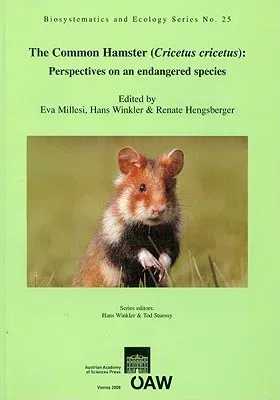The Common Hamster is a fascinating species that differs from other
hibernating small mammals in several aspects. Females have up to three
litters per season and under favourable conditions both males and
females are sexually mature in their first year. The ability to cache
food changes the need for fattening prior to hibernation and
consequently can alter the pattern of reproductive activity. The Common
Hamster has lived in agricultural areas in close association with humans
for centuries. During the last few decades, the loss of suitable
habitats and modern agriculture technology have brought the species
close to extinction in many areas. It has thus been listed as a highly
threatened species in several European countries. Preventative measures
require detailed knowledge about the biology of the species and a
"hamster-friendly" management scheme in agricultural areas. In this
volume, contributions made at the 13th Meeting of the International
Hamster Workgroup have been summarized. Studies investigating burrow
architecture, population dynamics, predation pressure, life span and
reproductive activity underline the environmental flexibility of the
species. The results of conservation programs are presented and
discussed. Reports of breeding regimes with selected light-dark-cycles
that can be used to optimize reproductive output and may benefit
reintroduction projects have also been included. Generally the presented
results should help broaden our knowledge about the Common Hamster and
promote international networks to plan, implement, coordinate and
evaluate management programs.

